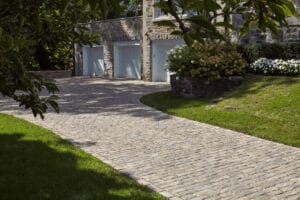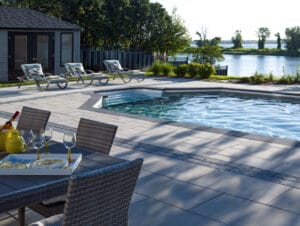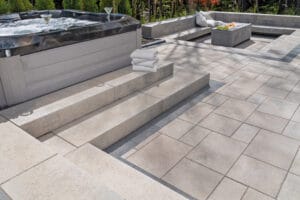Now that’s the $1,000 question! What distinguishes a slab from a paver? Once installed, the similarity between these two products can make it tricky to differentiate between them. However, what sets them apart is crucial when it comes to outdoor design.
Pavers
Firstly, pavers have a minimal thickness of 60 mm, typically hitting the 80 mm mark. Slabs are thinner, usually between 50 mm and 60 mm thick. Why the difference? Simply to serve different purposes. To support the weight of cars in residential parking, for example, you would certainly need to use pavers. Pavers are also recommended for high volume pedestrian walkways in a public setting (industrial, commercial, or institutional).


Slabs
Available in lengths and widths of up to one meter, slabs remain popular because they use less material, thus reducing cost. They are also easier to install due to their lower weight. Both slabs and pavers can be used around the pool, in residential walkways, or on patios. Roof terraces are the only place where slabs are mandatory. Our new METRIK slab is perfect for this! Another important feature of slabs is their tactile surface that can be easily identified by visually-impaired people using canes.


Permacon’s most popular products are available in both slab and paver formats. In short, aside from driveways and rooftops, the choice is yours!

Leave a comment